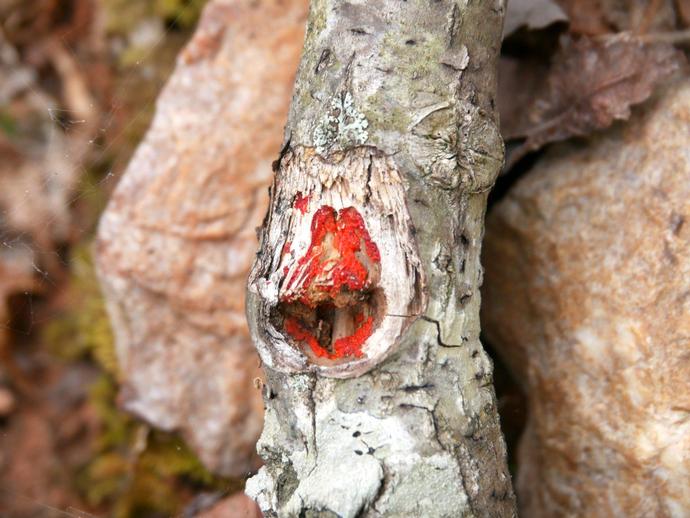May 10, 2020
While I'm no expert on slime molds (nor have I ever claimed to be), I'm pretty sure this is the red raspberry slime mold Tubifera ferruginosa. Slime molds used to be considered fungi, but now they are grouped within the kingdom Protista, which serves as the taxonomic catch-all for everything that doesn't fit into any of the other kingdoms of life. This means they aren't animals, plants, or fungi. Other examples of protists include amoebas, diatoms and algae.
Slime molds start out as single-celled amoeba-like critters that usually feed on bacteria. Once a slime mold cell mates with another slime mold cell, they begin to form a plasmodium, which is a mass of cellular material with multiple nuclei. It's all pretty confusing, but basically, a slime mold starts life as a tiny little thing that can grow into a very large, slimy mass.
You have probably seen slime mold pretty often, especially if you use mulch in your garden. Slime molds love to form on landscaping mulch, and it usually looks like someone became extremely ill in your flowerbed (seriously, one of the most common slime molds is Fuligo septica, commonly referred to as "dog vomit slime mold").
I hope you have enjoyed this gross update. I'll try to post a bird or something tomorrow. #BenInNature
NEW! If you discover something in nature that you would like help identifying, be sure to message us right here on Facebook with a picture and we'll have our experts help you identify it!
About this post: Social distancing can be difficult, but the next few weeks present a great opportunity to become reacquainted with nature. While he is working from home, Administrator of Science Ben Williams is venturing outdoors each day to record a snapshot of the unique sights that can be found in the natural world.
This post brought to you by VMNH Supporters Linda and Roscoe Reynolds.

 Hours & Admissions
Hours & Admissions Directions
Directions

